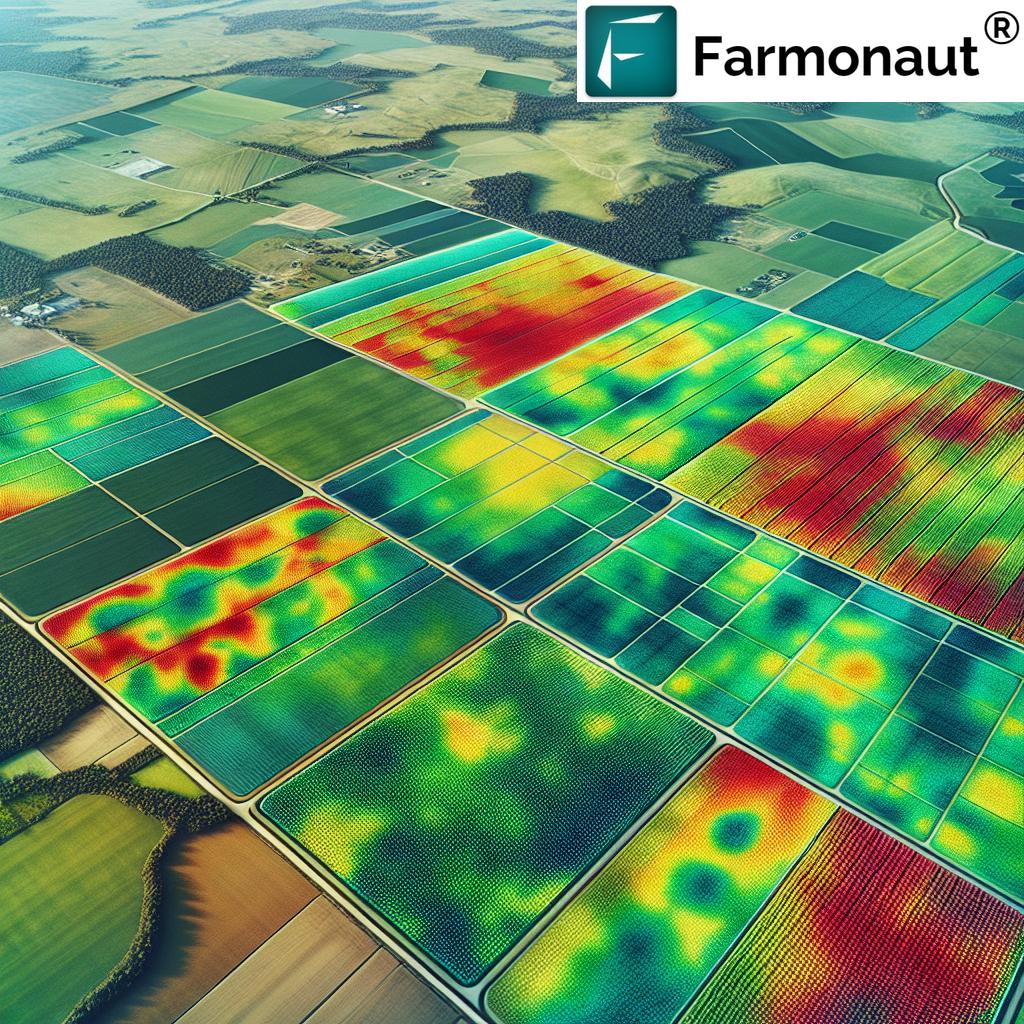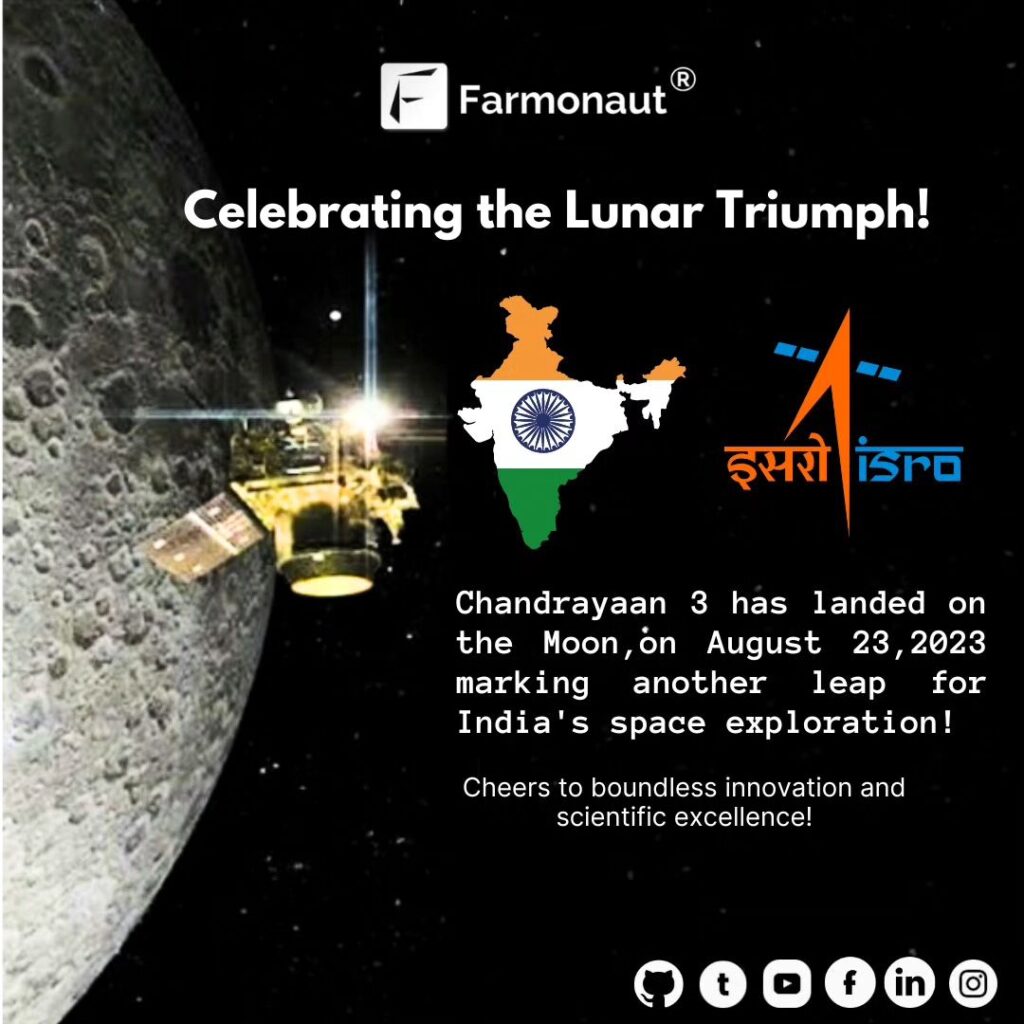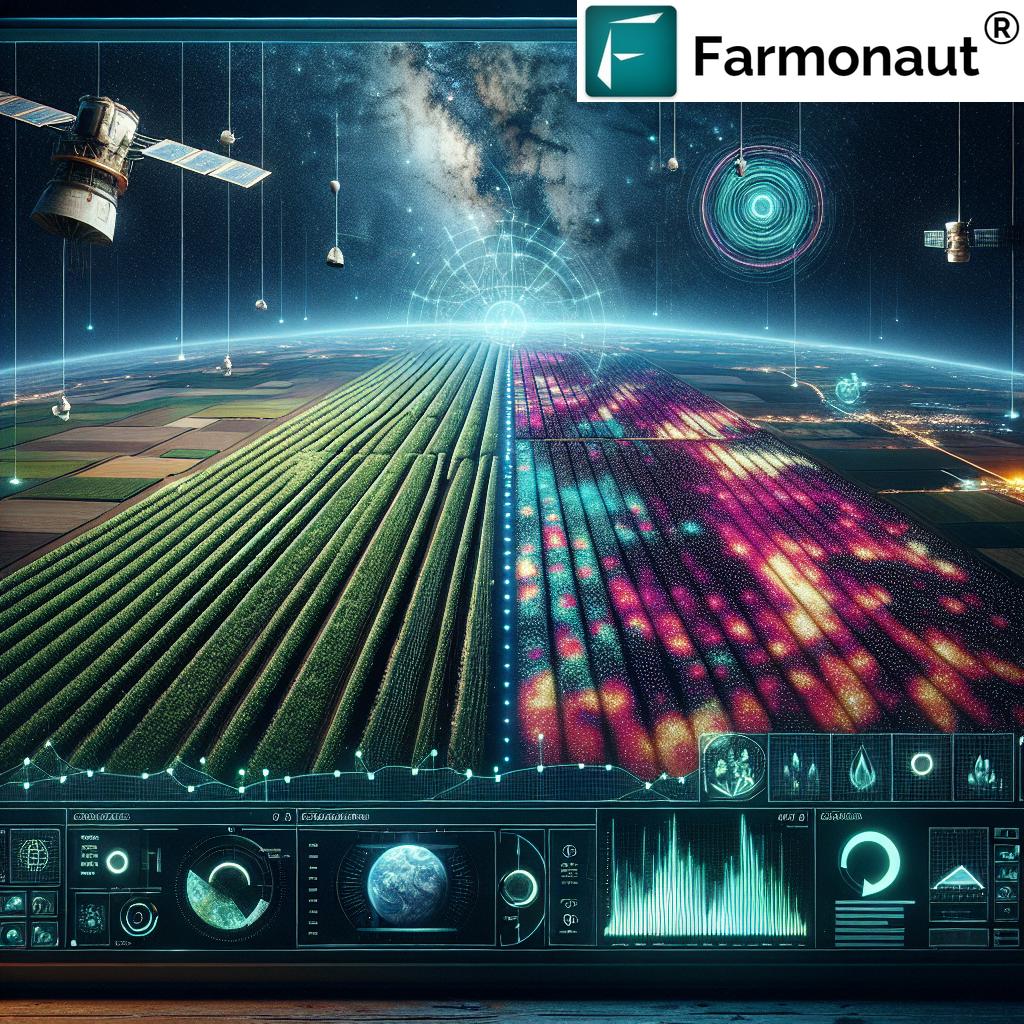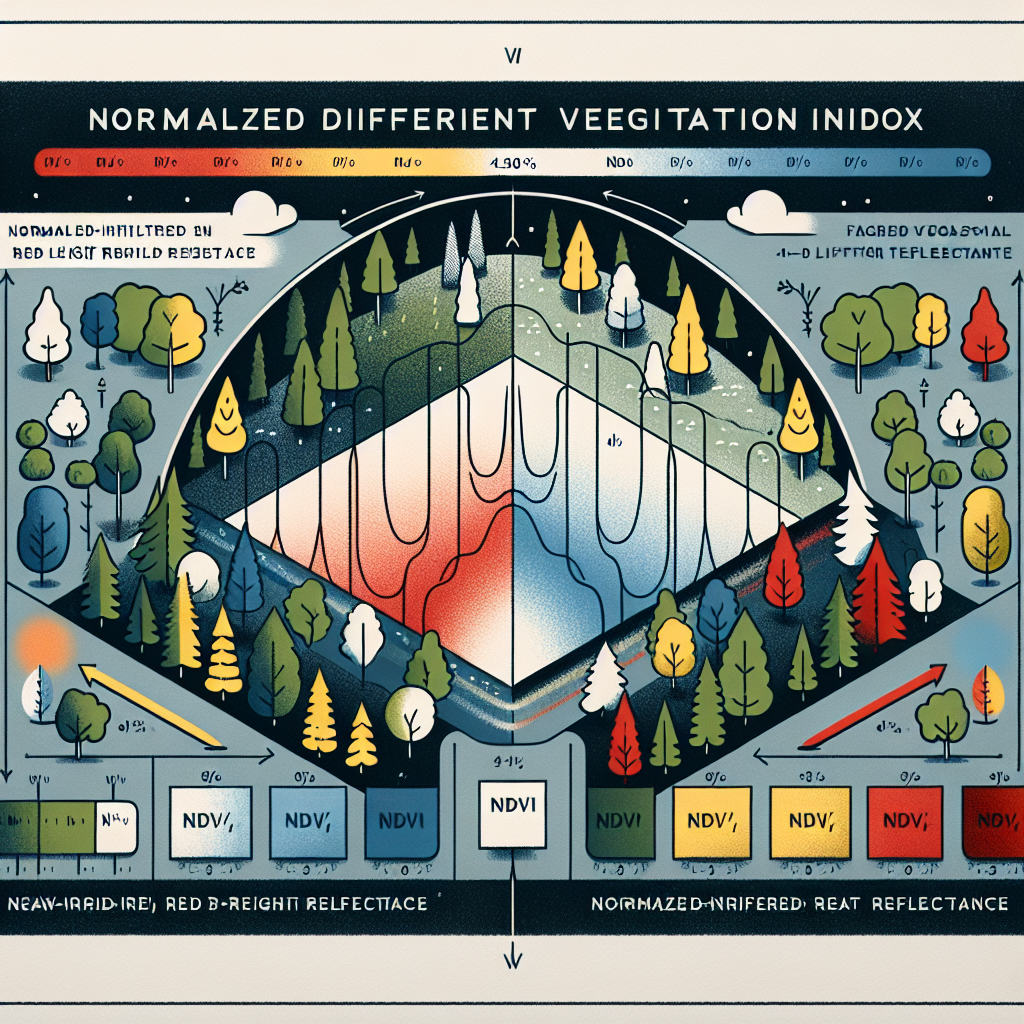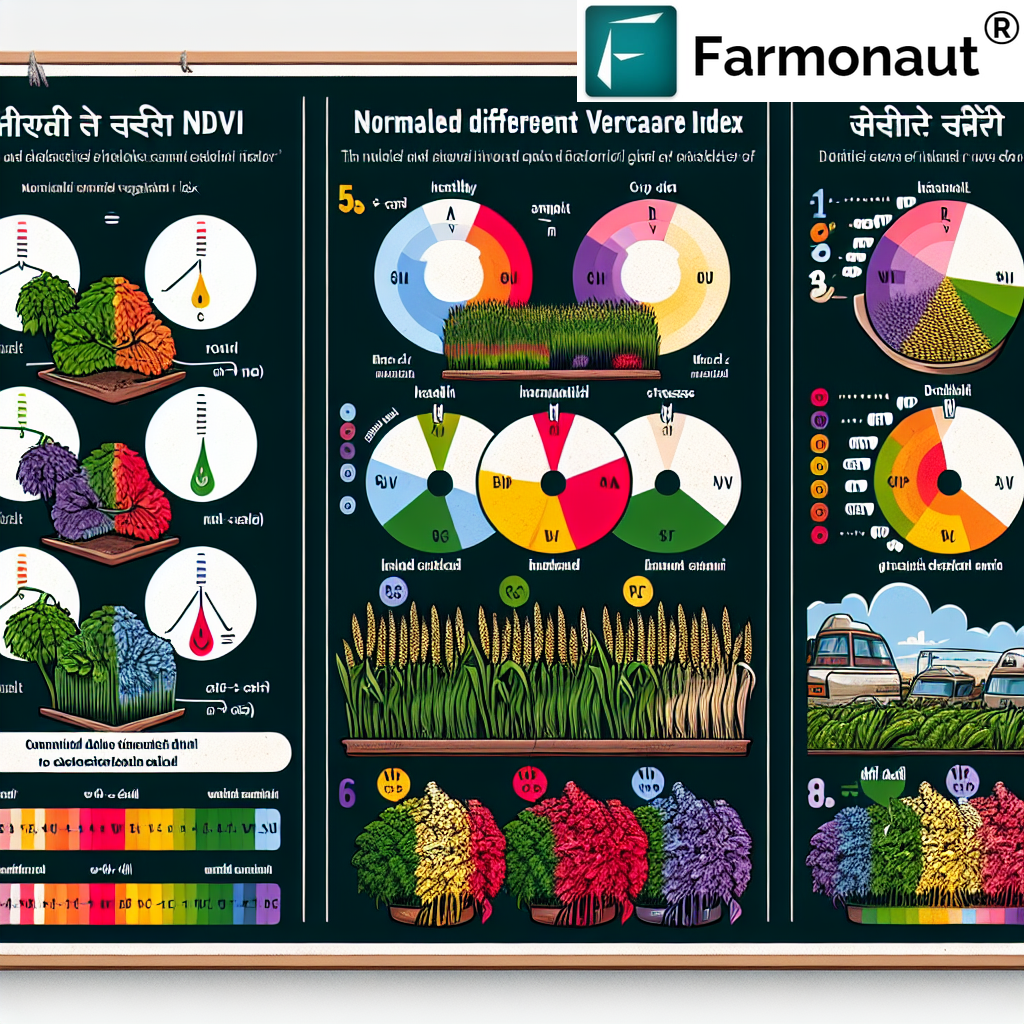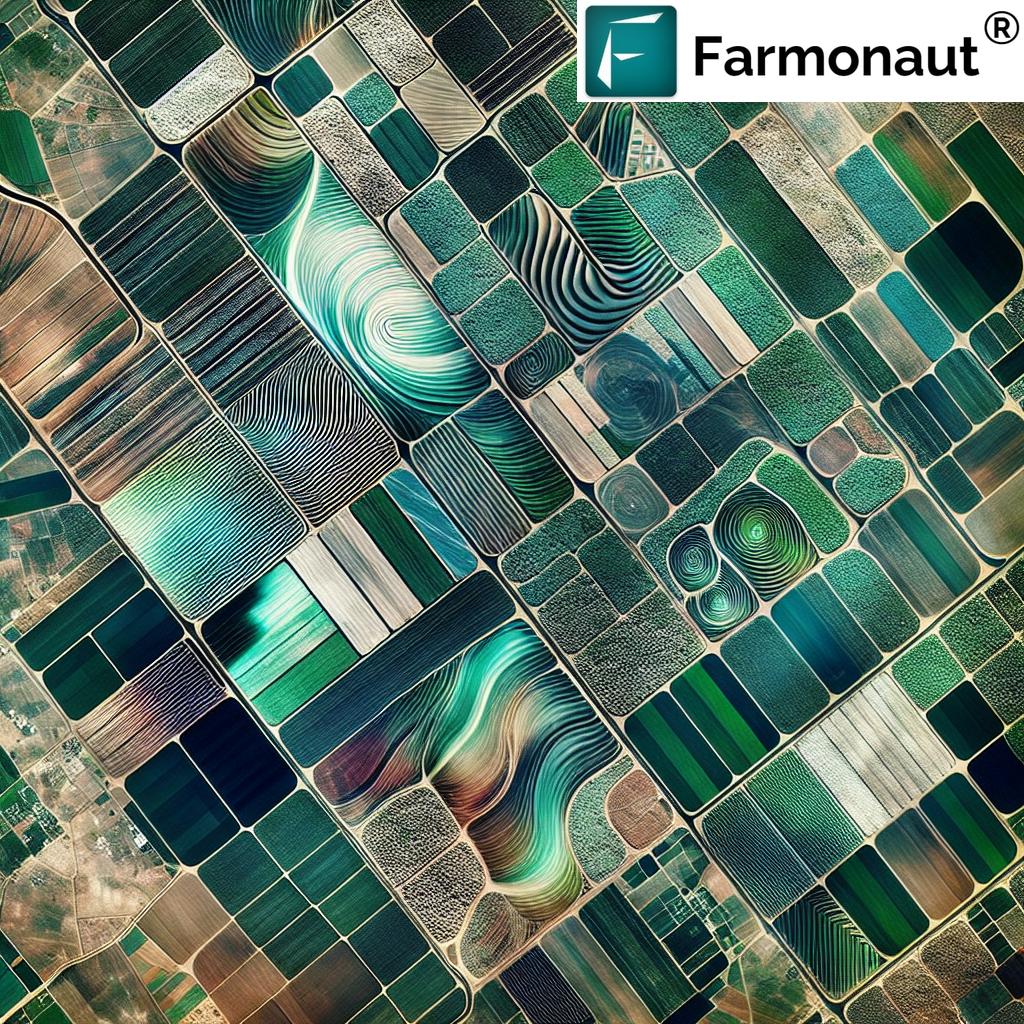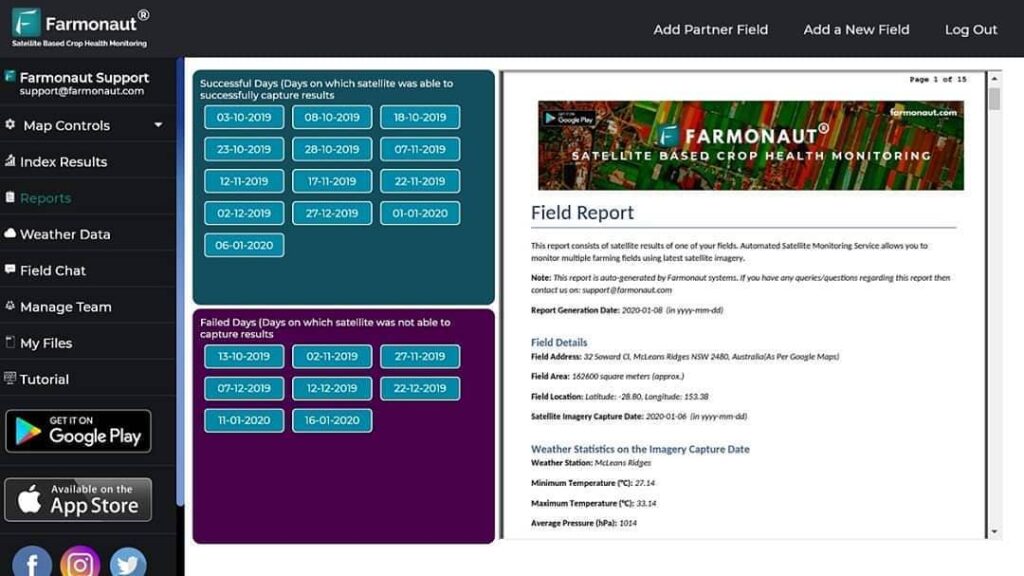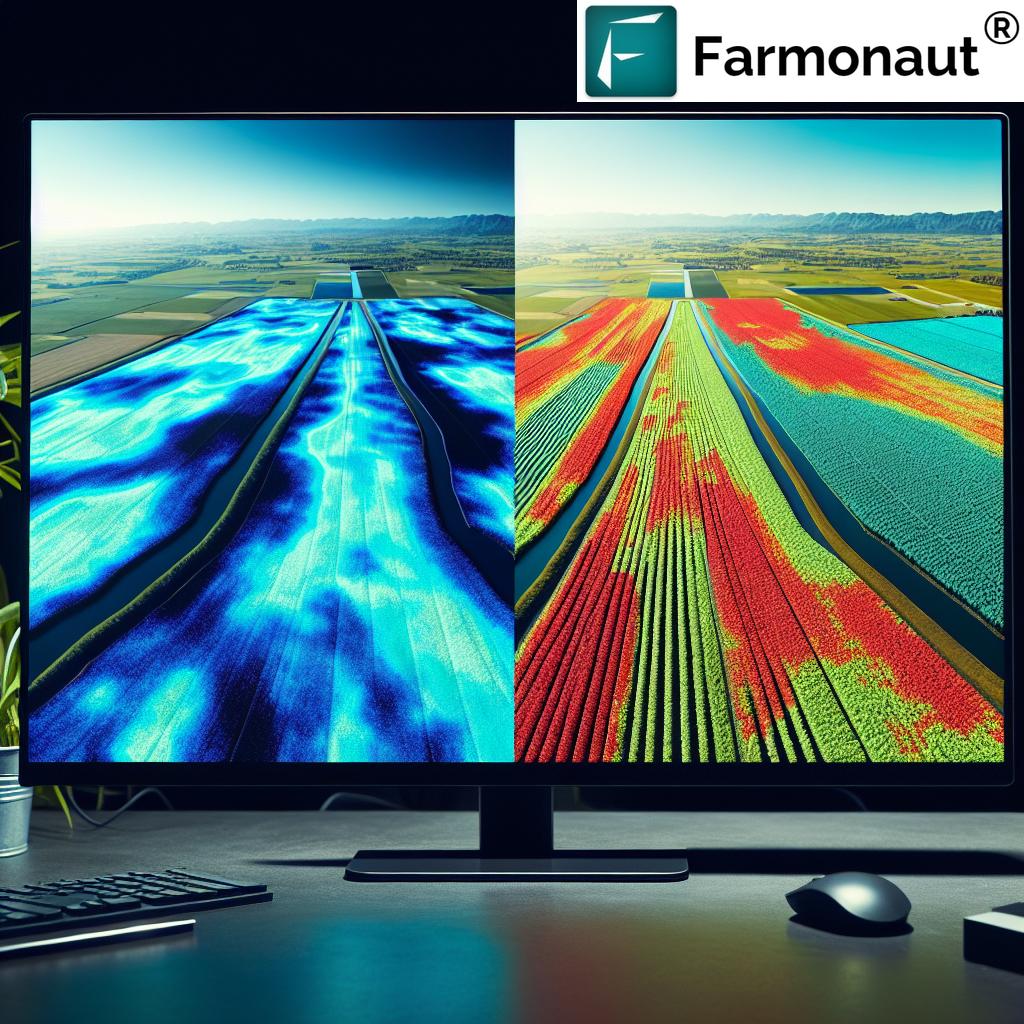Revolutionizing Crop Health and Water Stress Management with Satellite Technology
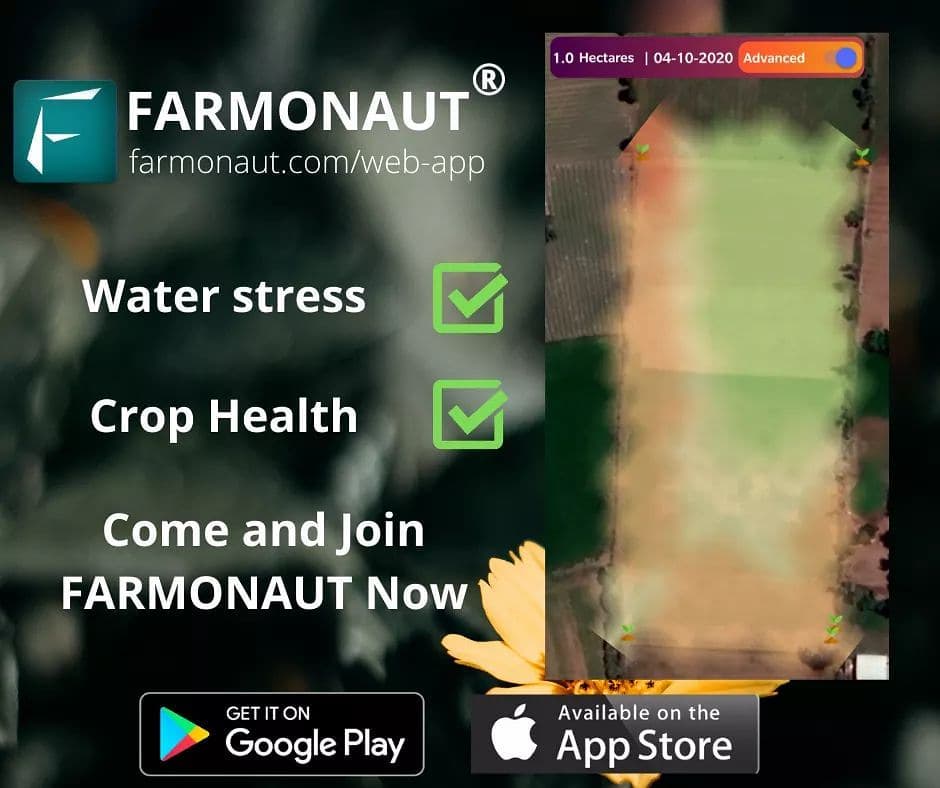
At Farmonaut, we understand the challenges farmers face in monitoring and managing crop health and water stress. Traditional methods can be time-consuming, labor-intensive, and often imprecise. That’s why we’re excited to introduce you to the future of farming: satellite-based crop monitoring and management.
The Power of Satellite Technology in Agriculture
Satellite technology has revolutionized many industries, and agriculture is no exception. We at Farmonaut have harnessed this powerful tool to provide farmers with unprecedented insights into their crops’ health and water needs. Here’s how satellite technology is transforming farming:
- Real-time crop monitoring: Satellites provide up-to-date imagery of your fields, allowing you to track crop growth and health without setting foot in the field.
- Water stress management: Advanced sensors can detect moisture levels in soil and plants, helping you optimize irrigation practices.
- Early problem detection: Spot issues like pest infestations or nutrient deficiencies before they become visible to the naked eye.
- Precision agriculture: Use detailed field maps to apply inputs like fertilizers and pesticides only where they’re needed most.
Introducing Farmonaut’s Satellite-Based Farm Management Solutions
At Farmonaut, we’ve developed a comprehensive suite of tools that leverage satellite technology to revolutionize farm management. Our platform offers:
- Satellite-Based Crop Health Monitoring: We use multispectral satellite images to provide you with detailed insights into your crops’ health. Our technology analyzes vegetation health indices like NDVI (Normalized Difference Vegetation Index) to give you a clear picture of your fields’ overall health.
- Water Stress Management: Our satellite sensors can detect soil moisture levels, helping you make informed decisions about irrigation. This not only saves water but also ensures your crops get exactly what they need, when they need it.
- Jeevn AI Advisory System: Our AI-powered tool delivers personalized recommendations based on real-time data from your fields. It considers factors like crop type, growth stage, weather conditions, and historical data to provide tailored advice on crop management strategies.
- Weather Forecasting: Access accurate, field-specific weather forecasts to plan your farming activities effectively. Our satellite image weather API provides detailed weather information for precise agricultural planning.
- Resource Optimization: Our platform helps you manage your resources more efficiently, from planning fertilizer applications to optimizing machinery usage.
The Advantages of Satellite-Based Monitoring Over Traditional Methods
While drone and IoT-based monitoring systems have their merits, satellite-based systems offer unique advantages, especially for large-scale farming operations. Here’s how Farmonaut’s satellite system compares:
| Feature | Farmonaut Satellite System | Drone-based Monitoring | IoT-based Monitoring |
|---|---|---|---|
| Coverage Area | Unlimited | Limited by flight time and regulations | Limited by sensor placement |
| Frequency of Data Collection | Daily to weekly, depending on satellite pass | As needed, but requires manual operation | Continuous, but limited to sensor locations |
| Initial Setup Cost | Low | High (drone purchase, training) | High (sensors, network infrastructure) |
| Maintenance | Minimal | Regular (drone maintenance, battery replacement) | Regular (sensor calibration, battery replacement) |
| Ease of Use | High (web and mobile app access) | Moderate (requires skilled operator) | Moderate (requires technical setup) |
| Data Processing | Automated, AI-powered | Often requires manual processing | Automated, but may require integration |
Implementing Satellite-Based Crop Monitoring on Your Farm
Getting started with Farmonaut’s satellite-based crop monitoring is straightforward:
- Sign Up: Create an account on our platform. You can access our services through our Android app, iOS app, or web application.
- Define Your Fields: Use our intuitive mapping tool to outline your fields. This helps us focus our satellite imagery on the areas that matter most to you.
- Choose Your Monitoring Package: Select the monitoring frequency and features that best suit your needs. We offer flexible packages to accommodate farms of all sizes.
- Access Your Data: Once set up, you’ll start receiving regular updates on your crops’ health, soil moisture levels, and personalized recommendations.
- Integrate with Your Existing Systems: For more advanced users, we offer an API that allows you to integrate our data with your existing farm management systems.
Smart Farming: The Future of Agriculture
Smart farming, also known as precision agriculture, is the future of farming. It’s about using technology to make informed decisions that optimize crop yields while minimizing resource use. Here’s how Farmonaut is leading the way in smart farming:
- Data-Driven Decision Making: Our platform provides you with actionable insights based on real-time data, helping you make informed decisions about every aspect of your farming operation.
- Resource Optimization: By providing detailed information about your crops’ needs, we help you use water, fertilizers, and pesticides more efficiently, reducing waste and environmental impact.
- Predictive Analytics: Our AI-powered system can predict potential issues before they become problems, allowing you to take preventive action.
- Customized Recommendations: Every farm is unique. Our system takes into account your specific crop types, soil conditions, and local climate to provide tailored advice.
- Continuous Improvement: As we gather more data, our system becomes smarter, providing increasingly accurate and helpful insights over time.
Case Studies: Success Stories with Farmonaut
Let’s look at how real farmers have benefited from our satellite-based crop monitoring system:
Case Study 1: Water Conservation in Drought-Prone Regions
A large-scale wheat farmer in a drought-prone region of India was struggling with water management. After implementing Farmonaut’s system:
- They reduced water usage by 30% through precise irrigation scheduling based on our soil moisture data.
- Crop yields increased by 15% due to optimal water management.
- The farm saved significantly on water and energy costs associated with irrigation.
Case Study 2: Early Pest Detection in Organic Farming
An organic vegetable farm in Indiana was facing challenges with pest management. Using our satellite monitoring system:
- They detected a pest infestation two weeks earlier than they would have through traditional scouting methods.
- Early detection allowed for targeted, organic pest control measures, preventing widespread crop damage.
- The farm maintained its organic certification while improving overall crop health and yield.
The Environmental Impact of Smart Farming
At Farmonaut, we believe that smart farming is not just about increasing profits; it’s also about promoting sustainable agriculture. Here’s how our satellite-based monitoring system contributes to environmental conservation:
- Reduced Water Usage: By providing precise information about soil moisture and crop water needs, we help farmers use water more efficiently, crucial in water-scarce regions.
- Optimized Fertilizer Application: Our detailed field maps allow for targeted fertilizer application, reducing runoff and minimizing the impact on local ecosystems.
- Decreased Pesticide Use: Early detection of pest issues allows for more targeted and often reduced use of pesticides, promoting healthier ecosystems.
- Lower Carbon Footprint: By optimizing resource use and reducing the need for frequent field visits, we help farms lower their overall carbon footprint.
- Soil Health Preservation: Our system promotes practices that maintain and improve soil health, crucial for long-term agricultural sustainability.
The Economic Benefits of Satellite-Based Crop Monitoring
Implementing a satellite-based monitoring system like Farmonaut’s can have significant economic benefits for farmers:
- Increased Crop Yields: By providing timely information about crop health and stress, our system helps farmers take action to maximize yields.
- Reduced Input Costs: Precise application of water, fertilizers, and pesticides leads to significant savings on input costs.
- Labor Efficiency: Satellite monitoring reduces the need for manual field scouting, allowing farm workers to focus on more critical tasks.
- Risk Mitigation: Early detection of issues like pest infestations or nutrient deficiencies helps prevent crop losses.
- Improved Planning: With access to historical data and predictive analytics, farmers can make better-informed decisions about crop selection and rotation.
- Access to Financial Services: Many financial institutions now offer better terms for loans and insurance to farmers using precision agriculture techniques.
Integrating Satellite Monitoring with Other Farm Technologies
While satellite monitoring is powerful on its own, its effectiveness can be further enhanced when integrated with other farm technologies:
- IoT Sensors: Ground-based sensors can provide complementary data to validate and enhance satellite observations.
- Drones: For more detailed, on-demand imagery of specific areas of interest identified by satellite monitoring.
- Farm Management Software: Integrate satellite data with your existing farm management systems for a comprehensive view of your operations.
- Automated Machinery: Use satellite-derived field maps to guide precision equipment like variable-rate sprayers or planters.
- Weather Stations: Combine local weather data with satellite observations for more accurate predictions and recommendations.
The Future of Satellite Technology in Agriculture
As technology continues to advance, the potential applications of satellite monitoring in agriculture are expanding. Here are some exciting developments we’re working on at Farmonaut:
- Hyperspectral Imaging: Future satellites will provide even more detailed spectral information, allowing for more precise crop health assessments.
- AI and Machine Learning: Advances in these fields will allow for even more accurate predictions and recommendations based on satellite data.
- Integration with Blockchain: Combining satellite monitoring with blockchain technology for improved traceability in the food supply chain.
- Carbon Sequestration Monitoring: Using satellite data to measure and verify carbon sequestration in agricultural soils, potentially opening up new revenue streams for farmers through carbon credits.
- Global Food Security: Satellite monitoring will play a crucial role in addressing global food security challenges by optimizing agricultural production worldwide.
Getting Started with Farmonaut
Ready to revolutionize your farming practices with satellite-based crop monitoring? Here’s how you can get started with Farmonaut:
- Explore Our Platform: Visit our website to learn more about our services and see our technology in action.
- Download Our App: Get our app from the Google Play Store or the Apple App Store.
- Sign Up for a Free Trial: Experience the power of satellite monitoring firsthand with our free trial.
- Consult with Our Experts: Our team is ready to help you understand how our technology can best serve your specific farming needs.
- Choose Your Plan: Select the subscription plan that best fits your farm’s size and monitoring needs.
Frequently Asked Questions (FAQ)
Q: How accurate is satellite-based crop monitoring?
A: Satellite-based monitoring can be highly accurate, often detecting issues before they’re visible to the naked eye. However, accuracy can vary based on factors like cloud cover and satellite resolution. At Farmonaut, we use advanced algorithms and multiple data sources to ensure the highest possible accuracy.
Q: How often is satellite data updated?
A: The frequency of updates depends on the satellite constellation and your subscription plan. We typically offer updates ranging from daily to weekly, depending on your needs and location.
Q: Can satellite monitoring work for small farms?
A: Absolutely! While satellite monitoring is often associated with large-scale farming, our technology is scalable and can provide valuable insights for farms of all sizes.
Q: Does cloud cover affect the monitoring?
A: Cloud cover can indeed affect optical satellite imagery. However, we use a combination of different satellite types and advanced algorithms to minimize the impact of cloud cover on our monitoring capabilities.
Q: How does Farmonaut’s system compare to drone monitoring?
A: While drones can provide very high-resolution imagery, they’re limited in terms of coverage area and frequency of monitoring. Satellite monitoring offers consistent, large-scale coverage without the operational challenges of drone flights.
Q: Is my farm data secure with Farmonaut?
A: Absolutely. We take data security very seriously and employ industry-standard encryption and security measures to protect your farm data.
Conclusion: Embrace the Future of Farming with Farmonaut
As we’ve explored throughout this article, satellite-based crop monitoring and water stress management represent the cutting edge of agricultural technology. At Farmonaut, we’re committed to making this powerful technology accessible to farmers of all scales, helping to increase productivity, reduce resource use, and promote sustainable farming practices.
By embracing smart farming techniques and leveraging the power of satellite technology, you’re not just optimizing your farm’s performance – you’re also contributing to a more sustainable and food-secure future for all.
Ready to take your farming to the next level? Join us at Farmonaut and discover the difference that satellite-based monitoring can make for your farm. Subscribe to our services today and step into the future of agriculture!
Join the Farmonaut community today and revolutionize your farming practices. Together, we can build a more sustainable and productive agricultural future. Happy farming!


